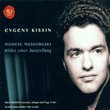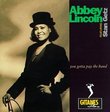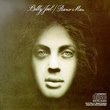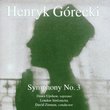| All Artists: Johann Sebastian Bach Title: Bach: Sonatas & Partitas; Itzhak Perlman Members Wishing: 1 Total Copies: 0 Label: EMI Classics Release Date: 10/25/1990 Genre: Classical Styles: Chamber Music, Historical Periods, Baroque (c.1600-1750), Instruments, Strings Number of Discs: 2 SwapaCD Credits: 2 UPCs: 077774948326, 077774948357 |
Search - Johann Sebastian Bach :: Bach: Sonatas & Partitas; Itzhak Perlman
 | Johann Sebastian Bach Bach: Sonatas & Partitas; Itzhak Perlman Genre: Classical
|
Larger Image |
CD DetailsSimilarly Requested CDs
|
CD ReviewsVery good - but not in a class with Szeryng or Milstein Hans U. Widmaier | Elmhurst, IL USA | 11/05/1999 (3 out of 5 stars) "Perman's unbelievable fame tends to obscure the superior accomplishments of others. That's a real pity because interested newcomers to this repretoire will be steered away from the two recordings that tower like giants over all others: those of Henryk Szeryng and Nathan Milstein. Perlman is not in their class. He has, of course, the technical, musical and tonal resources to play these peices beautifully. But his renditions just don't have the overwhelming grandeur of Szeryng's and Milstein's (as different as those two are from each other). Perlman plays well (extremely well, better than most mortals can even dream of), but he breaks no new ground, shows us no new dimensions in these pieces. You get what you would expect: gorgeous tone, fluid lines, tasteful phrasing, solid intonation. But he remains so conventional, so caught up in the reigning aesthetc ideal. All the truly great Bach players have managed to transcend mere beauty. To mention just a few: With Casals, we seem to witness the creation of the world, foundational events of immeasurable vastness. With Gould, we experience Bach's logico-mathematical genius. With Szeryng, Bach's music becomes a cathedral, a giant structure pointing beyond itself. Milstein's Bach is a life elixir, a joyous celebration of unlimited creativity and playfulness. Perlman's Bach? It's beautiful, but no more than that. My recommendation: Don't follow Perlman's fame. Get the Szeryng and Milstein sets and witness true greatness." Perlman's love for Bach is evident chefdevergue | Spokane, WA United States | 05/01/2002 (4 out of 5 stars) "Is this the Bach collection for baroque purists? Of course not. Nor will it please the lovers of the old-school romantics. However, it is a superb collection if approached on its own merits. Nobody can fault the sound on these CDs, it is just simply wonderful. It is also clear that Perlman does not approach unaccompanied Bach lightly --- two full decades of recording passed before he felt confident to record these works, and his respect and love for Bach comes through with every note.Whether or not you approve of the use of vibrato, it is obvious that Perlman has carefully thought through every bit of phrasing. The result is very satisfying, and the musical ideas flow comfortably from one passage to the next. I don't find the vibrato to be a distraction --- and let's face it, all of us who play unaccompanied Bach throw a little vibrato in there from time to time. This is a far cry from some of the grotesque, turn-of-the-century romantic parodies of Bach, where the vibrato and phrasing nearly obliterates Bach's original structure. Listen to how Perlman puts together these pieces. He is not guilty of romantic self-indulgence here.Compare it to Milstein and Szeryng if you must. I believe that Perlman holds his own here. He certainly has produced the best Bach collection in the last 30 years, no doubt." Anachronistic but beautiful interpretation arterry@comp.uark.edu | Fayetteville, Arkansas | 09/18/1999 (5 out of 5 stars) "This is one of the two extremes of Bach interpretation, the other extreme being a dry, technical reading with little or no vibrato. Perlman's brilliant, full, rich tone is completely different from what would have been heard in Bach's time--in fact, the use of vibrato did not become commonplace until the late 19th century, during the Romantic movement. But in fact, there is no reason why this beautiful tone cannot be applied to Bach too! Since it is an extreme, this recording may not please purists, but I have always thought that Bach would have liked to be able to hear his music performed as it often is today, using the full range of technical possibilities that have been developed since his time. In addition, the magnificent violins that Perlman uses for his recording, a Guarneri del Gesu of 1740 and a Stradivari of 1714, are truly pleasurable to hear. This is my favorite recording of Bach's music for unaccompanied violin, and it is one that I often turn to in my own study of the music."
|

 Track Listings (16) - Disc #1
Track Listings (16) - Disc #1








